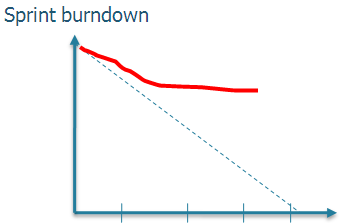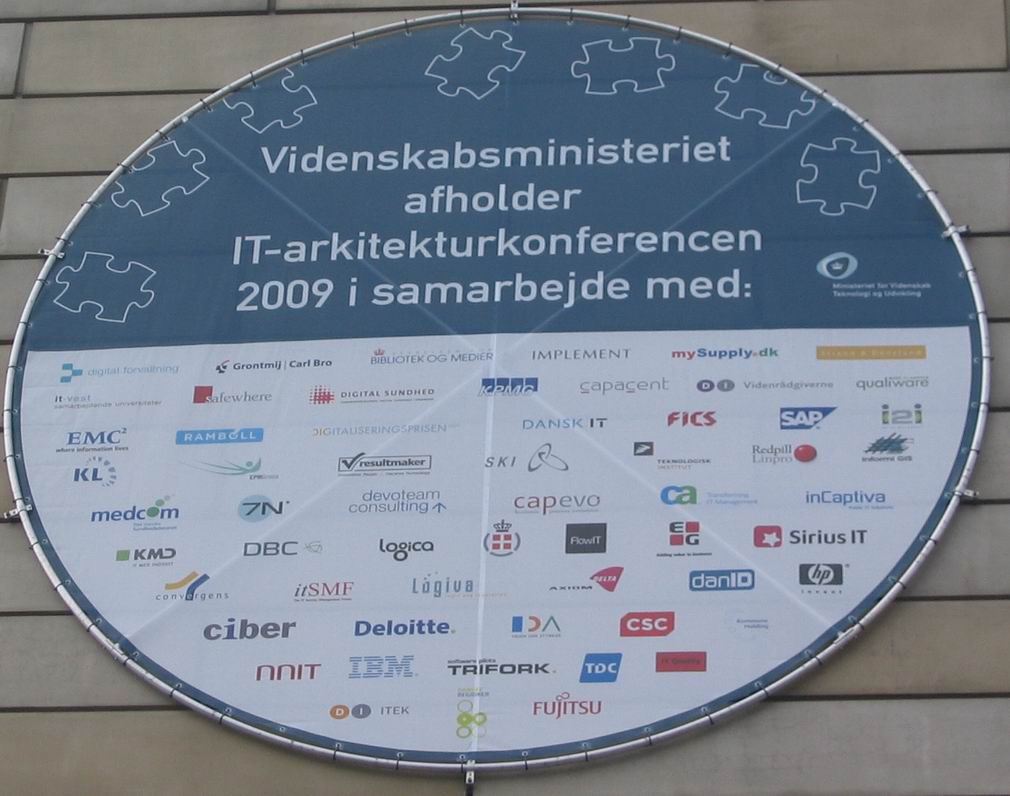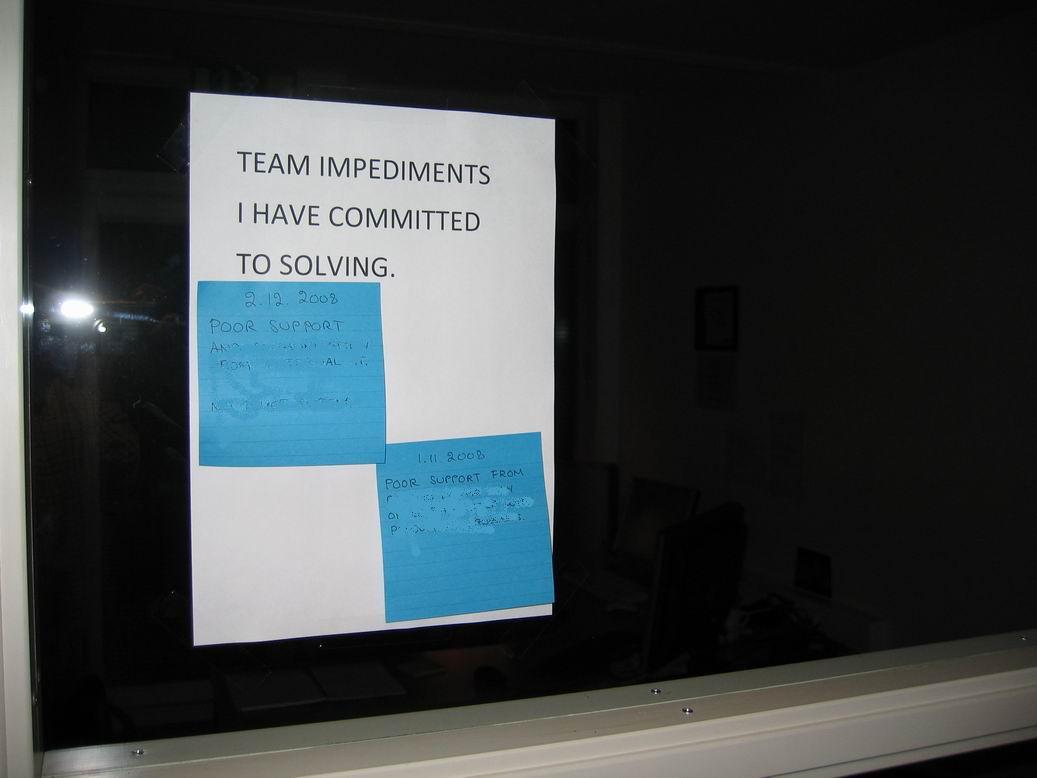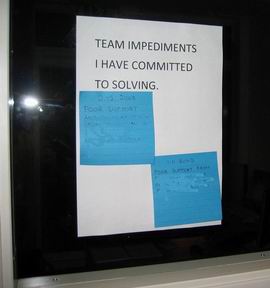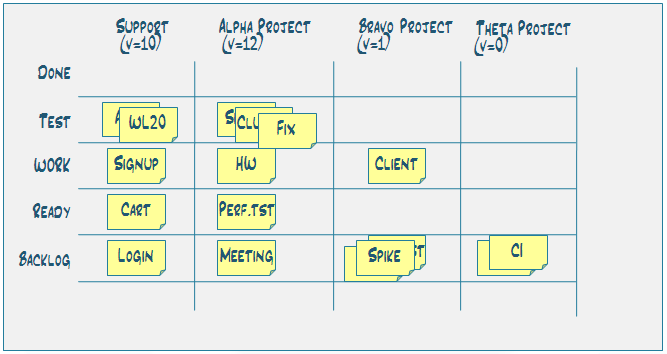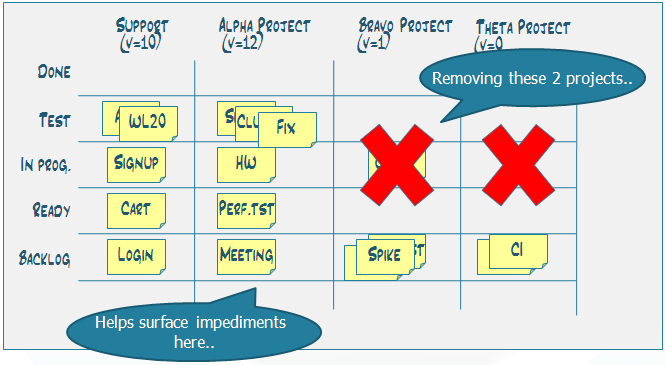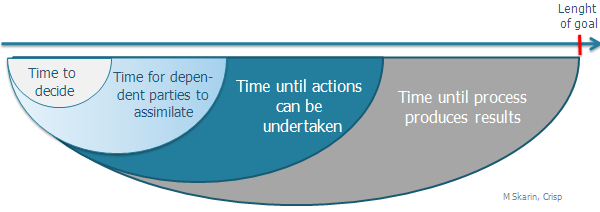At a customers site, teams have been using Scrum for year or more (even the sales people run it 🙂 Developers are talented and motivated. In one team, increased visibility was needed, so I helped them convert to Kanban.
A second team took noticed on what went on, copied the Kanban board and started using it on their own.
So before, their sprint burndowns looked like this:
(atleast for the last three sprints)
Now this is a picture of the same team after two weeks of Kanban
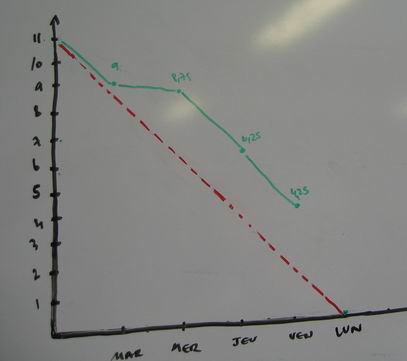
Isn’t it a bit cool? 🙂
Continue reading